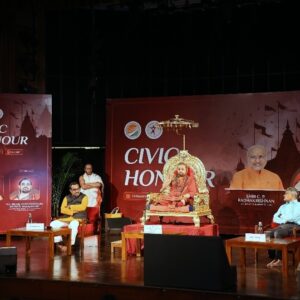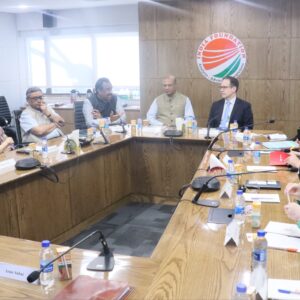~ By Syed Ata Hasnain
Tufail Ahmad’s book published by Infolimner carries the full title –‘Jihadist Threat to India : The Case for Islamic Reformation by an Indian Muslim’. It is a 346 page effort with a very appropriate foreword, author’s introduction and eight chapters on social and political themes relating to different aspects of Islam in India and Pakistan. The last two chapters dwell on the larger issues of Islamic Reformation and Global Jihadism.
A little on the background of the author will help appreciate the central theme of the book which appears to build a case for India’s Islamic space being the most suitable for a future reformation model. He is currently Director, South Asian Studies Project at the Middle East Research Institute, Washington. His arrival there has obviously not been through a path of roses. Coming from rural stock and having initially studied at a madrasa, Tufail went on to Aligarh Muslim University (AMU), Jawaharlal Nehru University (JNU), Indian Institute of Mass Communication (IIMC) and Kings College London. He has worked with many media and strategic institutions. He is no doubt a well-established name in the world of journalism relating to Islamic issues. In a field which is yet emerging Tufail Ahmad is a voice which projects the need for reformation in Islam. His own success story as a journalist and researcher cum academic has two important aspects which probably shape his thinking. First, are the opportunities which came his way in an India accused of being unfavorable to Muslims. This shaped his positive mind and gave him moderate ideas which continue to influence him. He had a bad experience at AMU during the time when Salman Rushdie’s Satanic Verses was released; opposing its ban brought him into confrontation with more radical minds and probably cemented his thoughts on Islam. His abhorrence towards any form of radicalism in Islam and the necessity for contextualization of the faith to modern times appears to remain an abiding belief.
It is important to remember that Tufail Ahmad belongs to a cusp generation. Many Muslims of his generation remained confused about their position in Indian society but it is also the generation which evolved itself to look for a cemented place in Indian society. He is obviously one of them who have an enduring belief in India. His writing is accordingly oriented as comes out clearly in this book.
Tufail is fortunate to have got Vikram Sood, former Director R&AW to write the foreword. It is an excellent start to the book, clearly demarcating the emphasis on radicalism in Pakistan and the Middle East, including the potential of its applicability in India. Equally appropriate is Tufail’s introduction. It is the description of his journey of evolution through the years of varied education and on the job training. The explanation about Pakistan’s campaign to exploit India’s fault lines could have been a little more elaborate about the Zia Plan conceived in 1977. The Pakistani involvement is later discussed in great detail while relating it to Kashmir.
Chapter 1 is about the idea of India and how it is shaping. A collection of essays without making any pretension of continuity and linkages carries that theme, focusing on democratic and secular credentials of India. It justifies why India is the best nation for Muslims to live in because of the freedom it offers, unlike the nations of West Asia.
The first of the essays of the second chapter takes up an interesting theme; the inability and frustration of Al Qaida to recruit Indian Muslims. This is a phenomenon which Indian Muslims proudly wear on their sleeve. Even as Al Qaida succeeded in bringing in surrogates in other parts of the Islamic world, the Indian Muslims shunned it because of the freedom and stability they enjoyed in India. The essay on Al Qaida in Pakistan is an elaborate and much needed explanation of the intricacies of terror in Pakistan and Afghanistan. It establishes various linkages between surrogate groups and describes the Lashkar e Toiba (LeT) as one of the most dangerous organization and likely to emerge with a near permanent presence in Pakistan. The kind of coordination LeT has been able to establish between ideology, business and nation-building is dangerous and has all the portents of attempting to rule the roost in Pakistan. Tufail is of the opinion that it is wrong to conclude that Al Qaida has weakened. In fact he makes a strong case for the world to believe how deeply Pakistan’s Inter Services Intelligence (ISI) is involved in propping up Al Qaida in the Indian subcontinent. The other essays in this chapter/section are short and very readable; they can also be read as stand-alone stories.
Chapter 3 focuses on Radicalization among Indian Muslims. Unfortunately it is not a cogent chapter but again back and forth thoughts are expressed in essays. It is this chapter that one hoped could have been dealt with a historical narrative. Perhaps the birth of the Jamat-e-Islami, the Tablighi Jamat and such organizations could have been discussed here with the current legitimacy of these. However, the status of various groups in India is well brought out along with the need for counter-radicalization. The attempts of the ISIS (Daesh) to recruit Indians are discussed, the conclusion is that all is not as well as we may wish to imagine. While the ratio of recruits for Daesh from India is low, the potential remains high and unpredictable. Perhaps one of the areas which could have been examined in this chapter is the increasing propensity of Muslims in the South getting more radicalized. The common belief is that the influence of the Gulf is more pronounced in Southern India because of the larger ratio of Muslims from there being in the Gulf.
Chapter 4 dwells at length on Pakistan. From Jinnah’s Islamism to Musharaf’s attempts to change the narrative and being caught in the vortex of a Pakistan undergoing turbulence through its self-created mechanisms of Jihad the various sections explain it all. There is an interesting but rather long essay on Pakistan’s Jewish problem which brings out the Israeli connection and why Israel remains opposed to Pakistan. The Baluch problem, however, is given short shrift considering it is the area where quid pro quo is always possible. However, Tufail makes a strong case for the world to examine the Pakistan Army’s war crimes in Baluchistan. The essay does not cover the China Pakistan Economic Corridor (CPEC), which Pakistan seems to believe will change the destiny of Baluchistan.
Chapter 5 is a continuing narrative on Pakistan and establishes why Pakistan is unlikely to change. An essay on Maldives and the rising stamp of Jihadism there is interesting. A lot is given to the notoriety of the ISI, describing in detail its role in guiding Pakistan’s Jihadi destiny. It concludes that nothing will change regards Pakistan’s negativity and self-belief that it can guide its destiny through the notoriety of its Army and the ISI. However, the Pakistani people are spared the ignominy of connection to the belief in these institutions. A review of India’s relations with Pakistan is the last essay and it does give a list of measures India needs to do even as it freezes relations with Pakistan, which is recommended.
The last three chapters are a review of politics of Islamic radicalism worldwide. Tufail goes on to discuss subjects such as Bangladesh, lone wolf attacks and the US system of counter terrorism. All these and more are interesting takes again in stand-alone mode. An interesting one is the essay on trends within Turkey which are overturning the successful secular model of Kemal Ataturk. ‘Erdoganism’ is discussed but the real reasons for Turkey’s counter- revolution appeared to have evaded the writer in this essay. The treatment meted out to Turkey by rest of Western Europe, by including it in NATO and refusing entry to European Union, has had a major effect on the psyche of the Turkish citizenry. This has helped in the counter-revolution and at no time has this been more evident than at the height of the Daesh crisis when Daesh fighters used the open borders with Syria to enter the war theatres of Iraq and Syria.
What is perhaps missing is a full essay on J&K, examining its history, how Sufism was diluted as the prevailing ideology of the Valley people and how financial conduits, drug peddling and creeping Wahabi culture changed the game in favor of the Separatists. It would have been interesting to see Tufail’s informed take on Kashmir and what he would recommend for the turn around there.
Overall a good book, for the general reader but a must for those with an orientation towards following Political Islam.
(The reviewer is a retired lieutenant general and former GOC of the Srinagar-based 15 Corps, senior fellow of the Delhi Policy Group and visiting fellow at the Vivekananda International Foundation, Delhi.)



